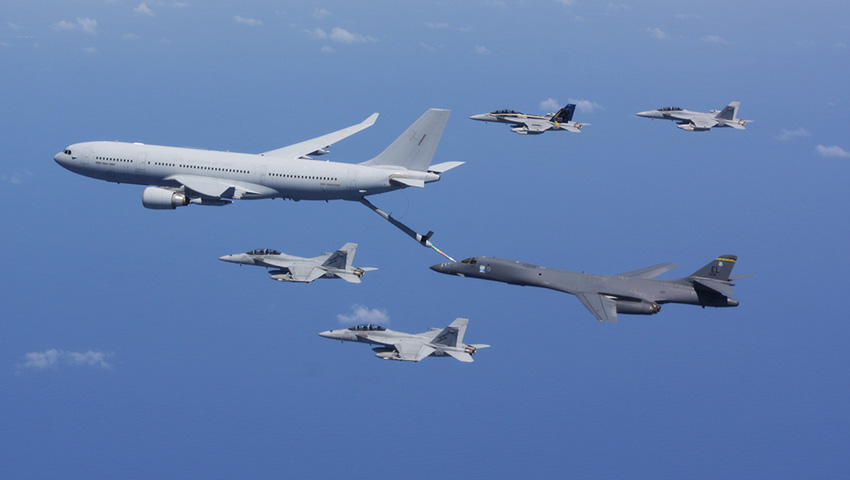Northrop Grumman, in partnership with the Royal Australian Air Force’s No. 33 Squadron and the Defence Aviation Safety Authority (DASA), has introduced an advanced, non-destructive testing technology to reap significant benefits for KC-30A Multi-Role Tanker Transport refuelling hose maintenance.
To continue reading the rest of this article, please log in.
Create free account to get unlimited news articles and more!
The Royal Australian Air Force’s KC-30A Multi-Role Transport Tanker (MRTT) aircraft are fitted with two refuelling pods for hose and drogue refuelling – each pod has a 30-metre refuelling hose that has a steel braid covered in a neoprene outer sheath.
Corrosion has been identified on the steel braid, making the hose unserviceable and in some cases unsafe.
Non-destructive inspection technicians (NDITECHs) from No. 33 Squadron and DASA recognised an opportunity for improving the maintenance and servicing of the aircraft’s refuelling hose through the introduction of electromagnetic eddy current array (ECA) testing.
The 30-metre-long air-to-air refuelling hose requires a frequent inspection to detect corrosion and general wear-and-tear. These inspections are critical to maintaining the longevity of the hose and minimising the risk of in-flight hose separations.
To minimise the potential of missed defects and reduce the time required to conduct inspections, Northrop Grumman and DASA worked with Eddyfi, a Canadian company that specialises in ECA testing, to develop a customised inspection probe utilising rapid-prototyping production methods.
The probe was then produced by EddyFi, and an inspection procedure developed by DASA. The probe scans the hose in minutes, searching for and pin-pointing corroded and damaged areas. It is millimetre-accurate and plugs into existing NDITECH computer equipment.
Warrant Officer Greg Wilson, from DASA’s non-destructive testing and composite technology facility at RAAF Base Amberley, said this case study had influenced the design of similar technology for drogue hose maintenance applications around the world.
"The ECA method removes the need for and risk of relying on visual inspections, and enables the NDITECHs to extend the lifespan of the refuelling hose – thus reducing cost of ownership for the platform," WOFF Wilson said.
Corporal Peter Booth, a No. 33 Squadron NDITECH reserve corporal and DASA civilian contractor, said the magnetic field and electric pulses identified areas requiring further analysis.
"Safety is the primary benefit of such technology, as well as enhanced quality control," CPL Booth said.
"We can locate corrosion early, be better informed with the correct data, and improve our management of it.
“This is just the start – we are always looking at future uses for ECA in partnership with uniformed, civilian and contractor personnel, to achieve today’s fifth-generation capability outcomes."
The KC-30A MRTT is fitted with two forms of air-to-air refuelling systems: an advanced refuelling boom system mounted on the tail of the aircraft and a pair of all-electric refuelling pods under each wing.
These systems are controlled by an air refuelling operator in the cockpit, who can view refuelling on 2D and 3D screens. The KC-30A can carry a fuel load of more than 100 tonnes and transfer part of that load to compatible aircraft, including:
- F/A-18A/B Hornets;
- F/A-18F Super Hornets;
- E/A-18G Growlers;
- E-7A Wedgetails;
- C-17A Globemaster III; and
- Other KC-30As.
The KC-30A MRTT can remain 1,800 kilometres from its home base with 50 tonnes of fuel available to offload for up to four hours. In its transport role, the KC-30A is capable of carrying 270 passengers. It comes with under-floor cargo compartments that can accommodate 34,000 kilograms of military and civilian cargo pallets and containers.
Stephen Kuper
Steve has an extensive career across government, defence industry and advocacy, having previously worked for cabinet ministers at both Federal and State levels.

 Login
Login








